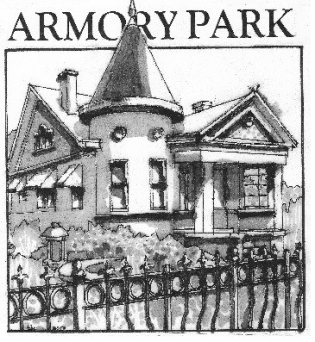 Journey through Tucson’s architectural evolution when downtown denizens open their doors for the Armory Park Historic District Tour. This self-guided stroll offers a glimpse at styles ranging from California bungalow and dainty Victorian to clever, contemporary, adaptations of vintage commercial buildings. (more below)
Journey through Tucson’s architectural evolution when downtown denizens open their doors for the Armory Park Historic District Tour. This self-guided stroll offers a glimpse at styles ranging from California bungalow and dainty Victorian to clever, contemporary, adaptations of vintage commercial buildings. (more below)
- When: Noon-5 p.m.; Sunday, November 12, 2017
- Home Tour starts at: St. Andrew’s Episcopal Church, 545 S. 5th Ave.
- Proceeds benefit: Armory Park’s Neighbors Feeding Neighbors Program and other neighborhood charities.
- Cost: $20.00 per person – children under 12, free.
- (All children must be accompanied by an adult. nly certified service dogs will be allowed in homes).
- You can buy tickets one of 2 ways: Purchase at St. Andrew’s on tour day – credit cards are welcome, or pay in advance – select the number of tickets, then click on the paypal link below.
Home Tour Ticket
$20.00
Print your receipt and bring to the home tour to exchange for the tour map.For information call Anne Cooper at (415) 613 – 3312, or email anneclarkcooper@gmail.com.
Historic and eclectic. Those words pair nicely in describing this year’s tour. More than a dozen homes, businesses, and other properties will welcome you, with each of them exemplifying a notch on Armory Park’s diverse timeline. And long that line is, dating back to the railroad’s arrival here in 1880. Within a few short years, Victorians and Queen Anne’s had become all the rage among railroad executives, who looked down their noses at the traditional adobes then dominating the town.
Taking its name from Armory Park, located on Sixth Avenue at the site of a former military plaza, the neighborhood initially spread up Third and Fourth avenues, and by 1900 had reached all the way south to 18th Street. As noted by Tucson historian Ken Scoville, traditional Spanish and Mexican designs were giving way to Anglo styles in this boom, and even existing adobe homes were retrofitted–ergo Anglicized–with wooden porches and roofs. Ultimately, home designs flourishing during that period still make Armory Park’s architecture distinctive. This area is also known for a design called Anglo-territorial, with pyramidal roofs and broad porches. “Armory has its own feel and character.”
But such snobbery came at a cost, said Scoville. “They used double brick and a lot of material that was largely imported. It was the pressure of fashion, with people scorning adobe, but as a result, their homes were colder in the winter and hotter in summer.” He says Armory Park was also among the first parts of Tucson to be laid out on a grid. “And today, unlike other downtown districts, such as the barrios, which were chipped away, Armory Park is pretty much intact.”
Neighbors Feeding Neighbors
In the tidy kitchen of St. Andrew’s Episcopal Church, Rev. Jefferson Bailey is placing a sprig of parsley just so. His prep area is a checkerboard of little boxed lunches–potato, broccoli, roast beef–precisely arranged inside Styrofoam containers. When collective perfection is achieved, each box is snapped shut and hustled off to the coolers. Those gleaming coolers store a week’s worth of meals, which eventually are dispersed to shut-ins and other hungry folks scattered among downtown neighborhoods. While the need for Bailey’s efforts seems obvious, that wasn’t always true. In this seemingly middle-class enclave, hunger is surprisingly hidden; a government friend told him that 40 percent of nearby residents live below the federal poverty level.
“To me, it was a big eye-opener,” he says. “If so, who were they?” So beginning in 2007, volunteers pounded the pavement, looking for folks who’d fallen through the cracks. They also visited the Armory Park Senior Center, retrieving the names of those who had stopped dropping by for meals. “We identified about 14 people who were no longer mobile enough to get there,” Bailey says. “And that’s how we got started.” Today, his Neighbors Feeding Neighbors program provides meals for downtown residents who are elderly or disabled, recovering from illness or unable to cook for themselves. It does so without any government assistance, relying solely on donations. “And the only bureaucracy,” Bailey chuckles, “is inside my head.” Rotating volunteer teams put in three-hour kitchen shifts, while another team distributes meals along with packages of yogurt, bread and fruit.
The rest is history. “It’s just people living in the neighborhoods, delivering food to people in the neighborhoods,” Bailey says, as he reaches for more Styrofoam boxes to be arranged just so.
